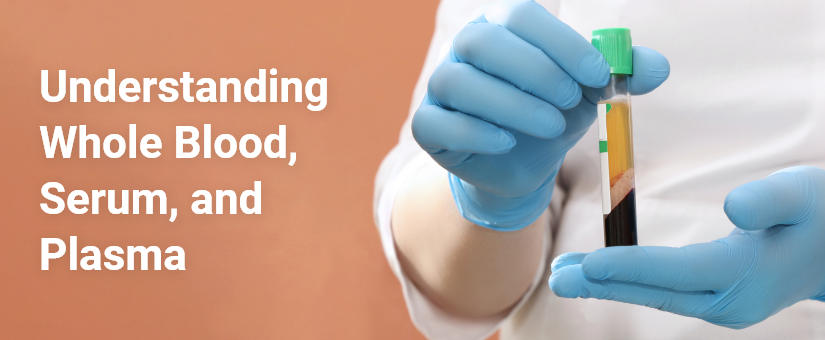Have you decided to donate blood for research? By donating blood for research purposes, you are contributing to the medical and scientific breakthroughs that may help patients who are suffering from heart diseases, autoimmune diseases, and cancer in the future. Research institutions, biopharmaceutical companies, and hospitals rely on such donations for ongoing research.
Defining whole blood, plasma, and serum
The laboratory will take a sample of your whole blood when you donate blood for research. This contains plasma (the liquid component of the blood) and cellular elements including white blood cells and red blood cells (RBCs).
Human serum is the fluid that can be obtained when whole blood clots, which will spontaneously occur when it contacts a surface such as plastic or glass. Blood naturally clots to prevent excessive blood loss from minor wounds. Clotted blood and the cells are typically centrifuged to the bottom of a collection tube. This leaves the straw-colored liquid over the clot.
Meanwhile, plasma is the blood’s liquid component. It is obtained when an agent that prevents clotting is added to whole blood, then placed in a centrifuge. Plasma separation from blood occurs, particularly the cellular material from the layer of lighter liquid. Ethylenediaminetetraacetic acid (EDTA), citrate, and heparin are the most commonly-used anticoagulant agents.
The main difference between serum and plasma is that plasma is liquid and serum is fluid. Most of their components are similar, but plasma has fibrinogen, a protein, which serum doesn’t have. Both can be extracted from blood using a centrifuge. However, serum is obtained only after the blood clots while plasma is obtainable before blood coagulates. Serum is often used for blood typing and diagnostic testing, while plasma helps address blood clotting issues.
How collected samples are used
Biological serum, plasma, and whole blood samples for lab analysis are usually collected in plastic or glass tubes that have been partially evacuated. This ensures that their internal air pressure is lower than the atmospheric pressure.
Color-coded polymer stoppers are used to indicate the contents of each tube. For example, plain tubes without anticoagulants have red stoppers. These are the tubes that are used to prepare serum after clotting and centrifugation.
Lavender or purple top tubes have EDTA in them and green tubes contain heparin. Collection tubes with blue stoppers contain citrate, but it’s more common to find citrate containing plasma as recovered plasma from blood donations.
When blood is donated for therapeutic purposes, the collecting agency ensures use within a month.
Outdated citrate plasma is an industrial commodity and it can be processed to provide components like the synthetic normal human serum, which is the starting point for most calibrators in commercial immunoassay products. Segments of tubing for transferring separated plasma from RBCs may be obtained from outdated plasma vendors. They have around 500 uL of plasma, which can be used for informal normal-range studies.
Laboratories typically set a time limit on how long plasma or serum remains in touch with RBCs before they’re physically separated, usually by pouring off into a different tube while maintaining the donor’s identity. This is necessary as RBCs can rupture down the line and the contents can interfere with many assays.
Donate blood for research
Solomon Park Research Laboratories supports the efforts of researchers and scientists by providing them with high-quality whole blood samples, picked carefully from our growing donor database.
We also provide the highest-quality pooled and individual human serum samples and plasma samples to the biotechnology and scientific industry, using fresh or immediately frozen samples. Our lab has the know-how and technology to formulate custom pooled batches of biological serum to ensure the perfect samples for any research application.
If you need blood for research, get in touch with us for our Same Day Whole Blood Acquisition Service.
If you would like to donate blood for research, make an appointment today.

